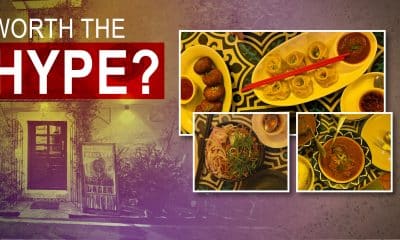Culture
Nowruz: The 3,000-Year-Old Persian New Year Celebration That Unites Millions
Every year, on or around March 20, millions of people across the world gather with their loved ones to celebrate Nowruz, the Persian New Year. Recognized by the United Nations as International Nowruz Day on March 21, this 3,000-year-old tradition is more than just a new beginning—it is a festival of renewal, light, and unity. Rooted in Zoroastrianism, Nowruz marks the arrival of spring, symbolizing the triumph of light over darkness and the rebirth of nature.
Who Celebrates Nowruz?
Nowruz is celebrated by around 300 million people worldwide, especially in Iran, Afghanistan, Azerbaijan, Uzbekistan, Kurdish and Turkic Uyghur communities, and Parsis in India and Pakistan.
Despite its Persian origins, Nowruz has withstood multiple conquests and cultural shifts, remaining a vibrant tradition in Central and West Asia.
How Is Nowruz Celebrated?
Nowruz is a 13-day festival filled with family gatherings, fireworks, poetry, music, and traditional games. In Iran, the celebrations begin with “khane tekani”, a ritual of deep spring cleaning to clear away negative energy. Across Afghanistan and Central Asia, people participate in street festivals and bonfires, welcoming the new year with joy and warmth.
The Iconic Nowruz Table: Haft-Sin
A key part of the celebrations is the Haft-Sin table, a symbolic display of seven items beginning with the letter “S” in Persian:
Sabzeh (Sprouts) – Symbolizing rebirth and renewal
Seeb (Apple) – Representing health and beauty
Sir (Garlic) – A sign of medicine and protection
Serkeh (Vinegar) – Symbolizing patience and wisdom
Senjed (Dried fruit) – Representing love and passion
Samanu (Wheat pudding) – A symbol of strength and prosperity
Sumac (Spice) – Representing the sunrise and new beginnings
Colourful painted eggs, nuts, sweets, and dried fruits also adorn the table, symbolizing fertility and abundance.
A Feast of Flavors: Nowruz Cuisine Across Cultures
Nowruz is as much about food as it is about tradition. Different countries have unique dishes that define their celebrations
Iran – Kookoo Sabzi – A green herb frittata | Sabzi Polo Ba Mahi – Herbed rice with fried fish | Reshteh Polo – Aromatic rice with noodles
Azerbaijan & Uzbekistan – Plov – A fragrant rice dish with meat, raisins, and spices | Dolma – Grape leaves stuffed with minced meat and rice | Shekerbura – Sweet pastry filled with nuts and cardamom
Afghanistan – Sabzi Challow – Spinach and lamb stew | Haft Mewa – Dried fruit salad in syrup | Kolcheh Nowrozi – Traditional Nowruz cookies
Kazakhstan – Nauryz Kozhe – A nourishing soup with barley, horse meat, and milk
Iranians enjoy family picnics on the final day of Nowruz, while in Kazakhstan, yurts are set up to host grand feasts.
‘Nowruz 2025’
Celebrated across Iran and several other countries, the holiday symbolises renewal and prosperity. Here’s everything you need to know https://t.co/GG6nqxFhFD pic.twitter.com/IBVC7Phg3z
— Al Jazeera English (@AJEnglish) March 20, 2025
How to Celebrate Nowruz Near You
Several restaurants around the world offer Nowruz-themed menus for those looking to join in the festivities. In London, popular spots include Bergamot, Plateful Cafe, Berenjak, and Tehran-Berlin, while Konj Cafe in Edinburgh and Parisa Events in Cardiff also offer special Nowruz meals.
A Celebration of Resilience and Renewal
International Nowruz Day is more than just a New Year celebration—it is a powerful cultural tradition that has endured for millennia. Whether through rituals, feasts, or festivals, this Persian New Year continues to bring millions of people together, reminding the world of the beauty of renewal, unity, and hope.
India to begin full-scale operations at Iran’s Chabahar Port by May-end







































